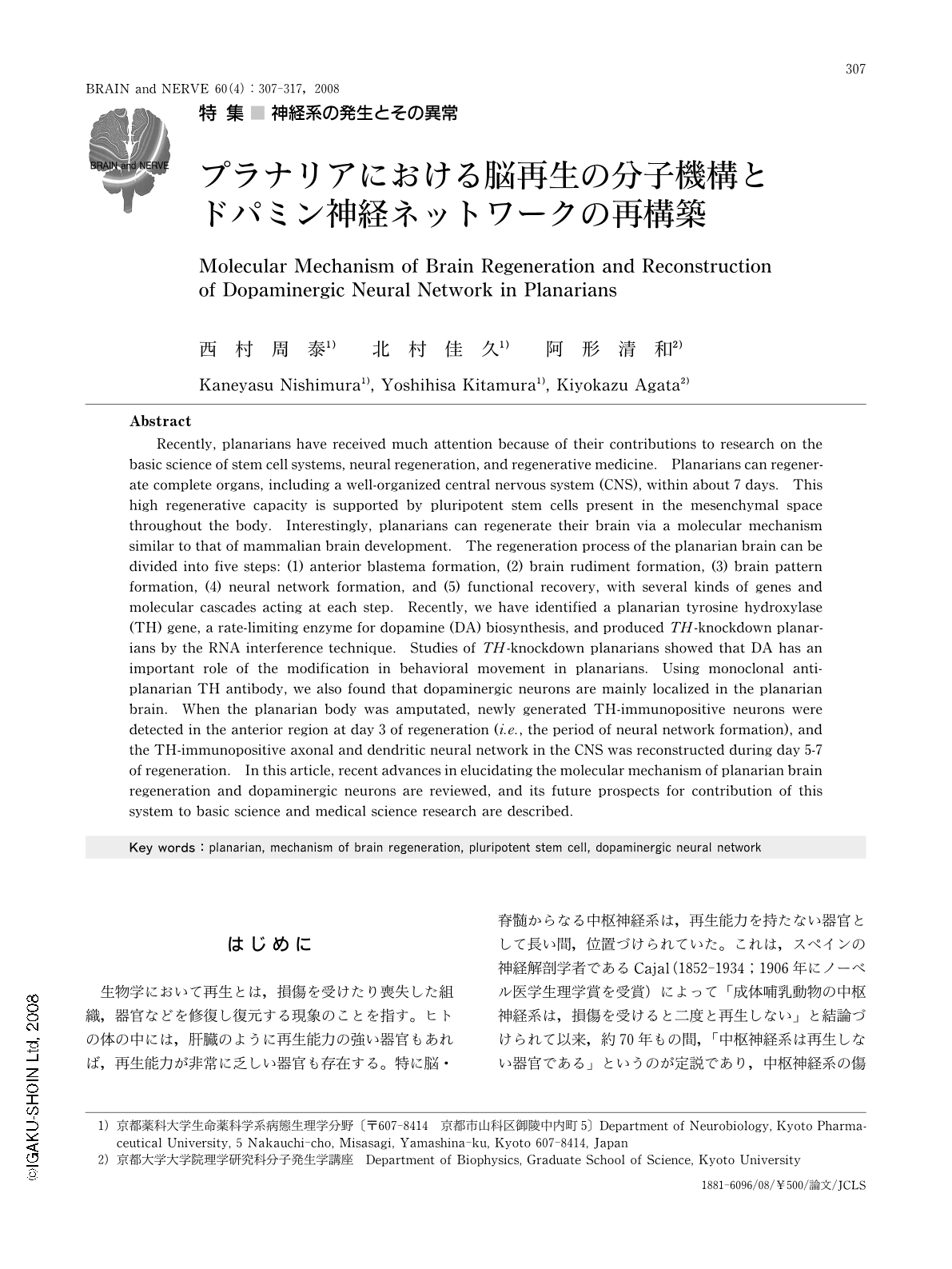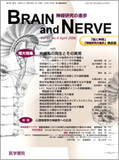Japanese
English
- 有料閲覧
- Abstract 文献概要
- 1ページ目 Look Inside
- 参考文献 Reference
はじめに
生物学において再生とは,損傷を受けたり喪失した組織,器官などを修復し復元する現象のことを指す。ヒトの体の中には,肝臓のように再生能力の強い器官もあれば,再生能力が非常に乏しい器官も存在する。特に脳・脊髄からなる中枢神経系は,再生能力を持たない器官として長い間,位置づけられていた。これは,スペインの神経解剖学者であるCajal(1852-1934;1906年にノーベル医学生理学賞を受賞)によって「成体哺乳動物の中枢神経系は,損傷を受けると二度と再生しない」と結論づけられて以来,約70年もの間,「中枢神経系は再生しない器官である」というのが定説であり,中枢神経系の傷害および疾患の根治は非常に困難とされていた。しかし,ここ10余年ほどの間に,中枢神経系の再生に関する見方は大きく様変わりしてきている。その要因の1つは,Gageらによる成体神経幹細胞の発見である1)。成体哺乳動物の脳内のごく限られた部分では,神経新生が起こっていることが示されたのである。また,1981年に樹立されたマウスの胚性幹細胞(embryonic stem cell: ES細胞)はノックアウトマウスを作製するための細胞から,近年では再生医学の中核を担う細胞として脚光を浴び,多くの研究グループによって特定の神経細胞への分化・誘導に関する報告がされるようになった2-5)。さらに,1998年にはヒトES細胞が樹立され6),ヒトへの応用が現実味を帯び始めている7,8)。すなわち,このES細胞をうまく使うことにより,必要なときに必要な量だけ特定の神経細胞を作り出し,これを脳の損傷部位または病変部位に移植すれば,失われた神経機能の回復,さらには神経疾患の根治治療が期待できるというわけである。しかしながら,細胞移植にあたっては,①どのような細胞をどのくらいどの場所に移植すればよいのか,②移植された細胞が宿主側の神経ネットワークと機能的なネットワークを形成できるのか,③腫瘍化の問題,といった課題が残されている。さらに,損傷部位または病変部位が広範囲に及ぶ場合,複雑で立体的かつ機能的な組織を細胞移植のみでカバーしきれるのか,という課題もある。本稿では,再生医学に対して新たな観点からアプローチするために,脳を含むすべての組織を再生することが可能なプラナリアにおける脳再生の分子機構を紹介するとともに,パーキンソン病の発症と深い関わりがあるドパミン神経の再生機構についても併せて紹介する。
Abstract
Recently, planarians have received much attention because of their contributions to research on the basic science of stem cell systems, neural regeneration, and regenerative medicine. Planarians can regenerate complete organs, including a well-organized central nervous system (CNS), within about 7 days. This high regenerative capacity is supported by pluripotent stem cells present in the mesenchymal space throughout the body. Interestingly, planarians can regenerate their brain via a molecular mechanism similar to that of mammalian brain development. The regeneration process of the planarian brain can be divided into five steps: (1) anterior blastema formation, (2) brain rudiment formation, (3) brain pattern formation, (4) neural network formation, and (5) functional recovery, with several kinds of genes and molecular cascades acting at each step. Recently, we have identified a planarian tyrosine hydroxylase (TH) gene, a rate-limiting enzyme for dopamine (DA) biosynthesis, and produced TH-knockdown planarians by the RNA interference technique. Studies of TH-knockdown planarians showed that DA has an important role of the modification in behavioral movement in planarians. Using monoclonal anti-planarian TH antibody, we also found that dopaminergic neurons are mainly localized in the planarian brain. When the planarian body was amputated, newly generated TH-immunopositive neurons were detected in the anterior region at day 3 of regeneration (i.e., the period of neural network formation), and the TH-immunopositive axonal and dendritic neural network in the CNS was reconstructed during day 5-7 of regeneration. In this article, recent advances in elucidating the molecular mechanism of planarian brain regeneration and dopaminergic neurons are reviewed, and its future prospects for contribution of this system to basic science and medical science research are described.

Copyright © 2008, Igaku-Shoin Ltd. All rights reserved.


